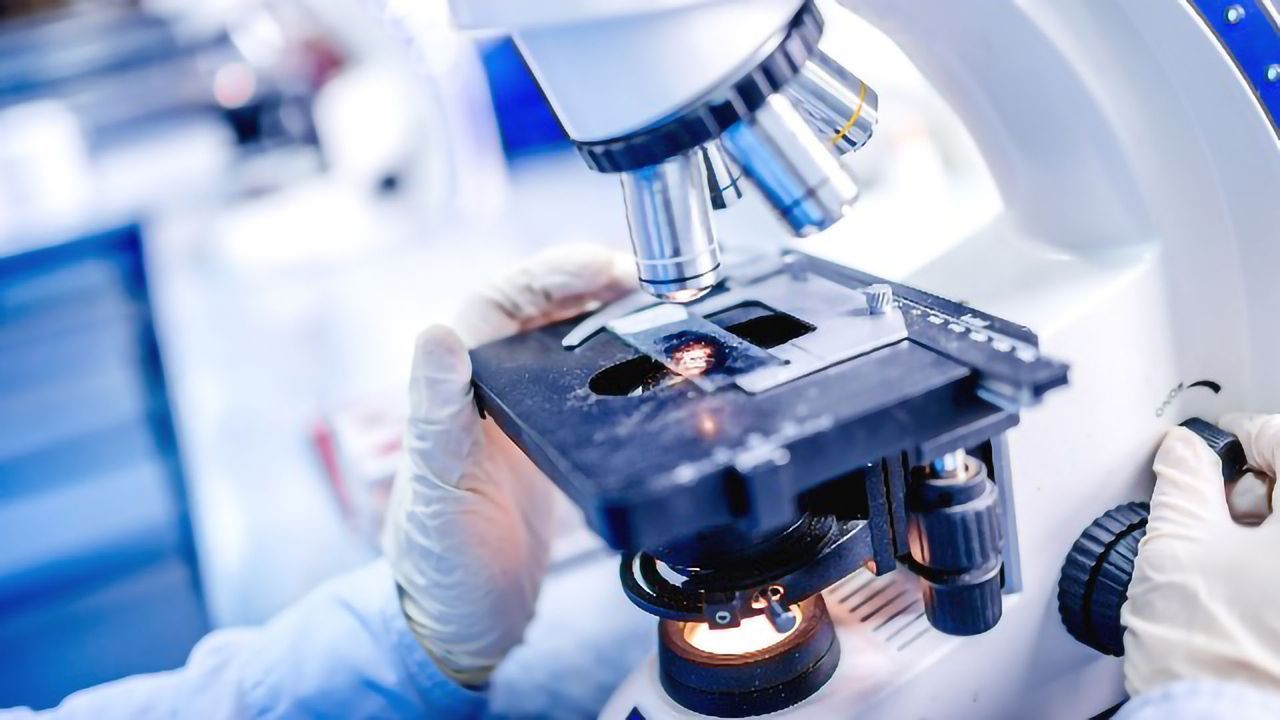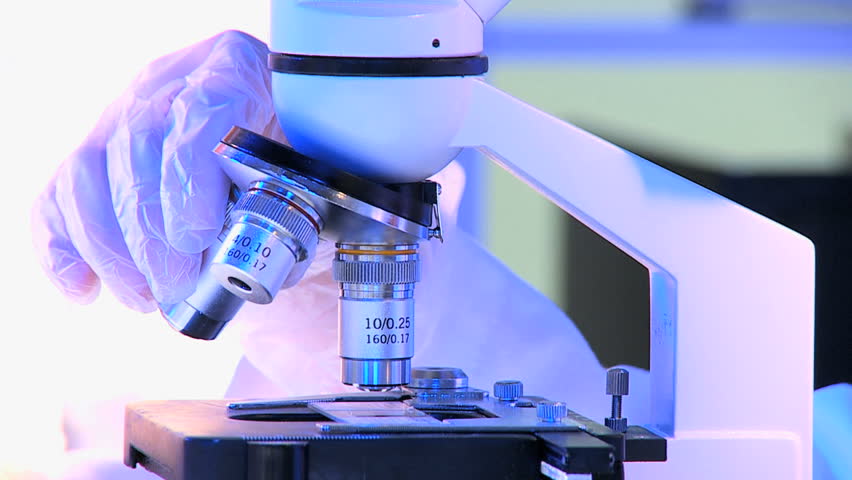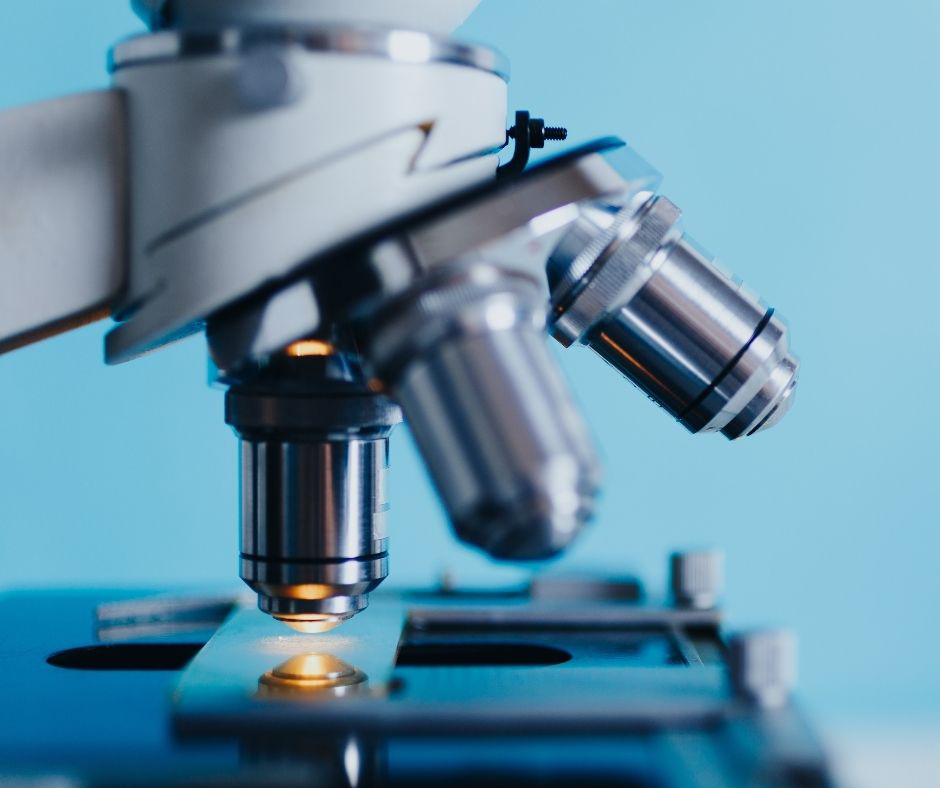Set your microscope on a tabletop or other flat, sturdy surface where you will have plenty of room to work. Plug the microscope’s power cord into an outlet.
(Note: some compound microscopes don’t use electric lighting, but have a mirror to focus natural light instead.)
Switch on your microscope’s light source and then adjust the diaphragm to the largest hole diameter, allowing the greatest amount of light through. If you have an iris diaphragm, slide the lever till the most light comes through. See the diagram below for help locating these parts.
Rotate the nosepiece to the lowest-power objective usually 4x for 40x magnification). It is easiest to scan a slide at a low setting, since you have a wider field of view at low power.
Place a microscope slide on the stage, either under the stage clips or clipped onto the mechanical stage if your microscope has one. A prepared slide works best when you do this for the first time. (If you do not have a prepared slide, place a strand of colored yarn or thread on a blank slide and place a coverslip over it.) Move the slide until the specimen is under the objective lens.
Adjust the large coarse focus knob until the specimen is in focus. Slowly move the slide to center the specimen under the lens, if necessary. Do this by nudging it gently with your fingers or by turning the slide control knobs if you have a mechanical stage.
Adjust the small fine focus knob until the specimen is clearly in focus. Then adjust the diaphragm to get the best lighting. Start with the most light and gradually lessen it until the specimen image has clear, sharp contrast.
Scan the slide (right to left and top to bottom) at low power to get an overview of the specimen. Then center the part of the specimen you want to view at higher power.
Rotate the nosepiece to the 10x objective for 100x magnification. Refocus and view your specimen carefully. Adjust the lighting again until the image is most clear (you will need more light for higher power). Repeat with the 40x objective for 400x magnification, which will enable you to see all of the specimen detail that’s necessary for high school biology lab work.
If your microscope has a 100x oil-immersion lens, you’ll need to put 1-2 drops of immersion oil over the slide coverslip (the piece of glass over the middle of the slide) before viewing it at the highest power. Move the 100x objective lens into position, and then slowly move the stage up until the lens makes contact with the oil. Continue focusing with the coarse focus knob until the color or blurred outline of the specimen appears. Finish focusing with the fine focus knob. With the 100x lens, you will be able to see additional cell detail, but you will need to take extra care with focus and contrast for a clear image. When you are done using the slide, clean the oil off of the slide and the lens with lens cleaning paper and solution.
Once you’ve mastered the basics of using your microscope, you can expand your microscope studies. Print out copies of our Microscope Observation worksheet to help you record what you see!
.png)
.png)


